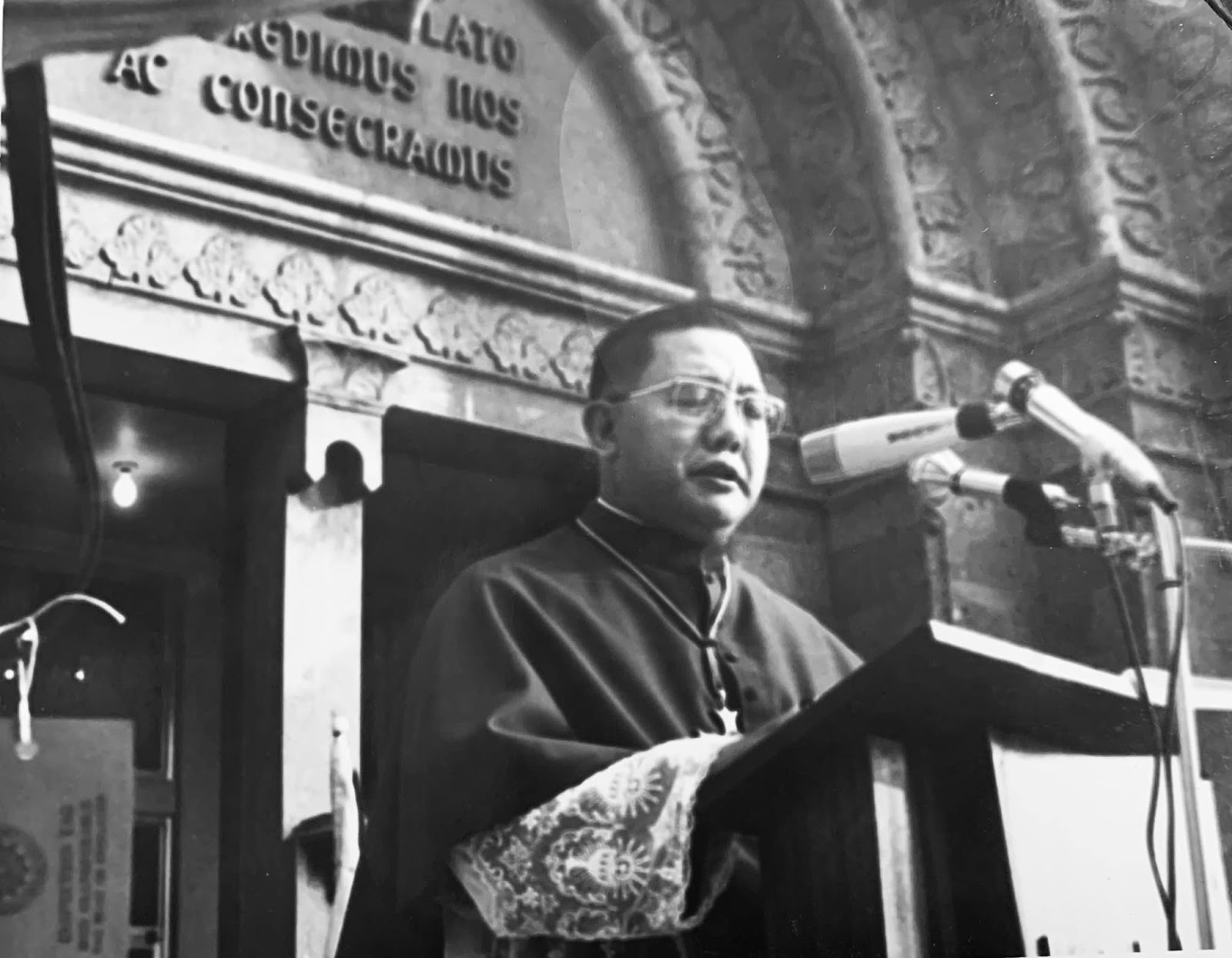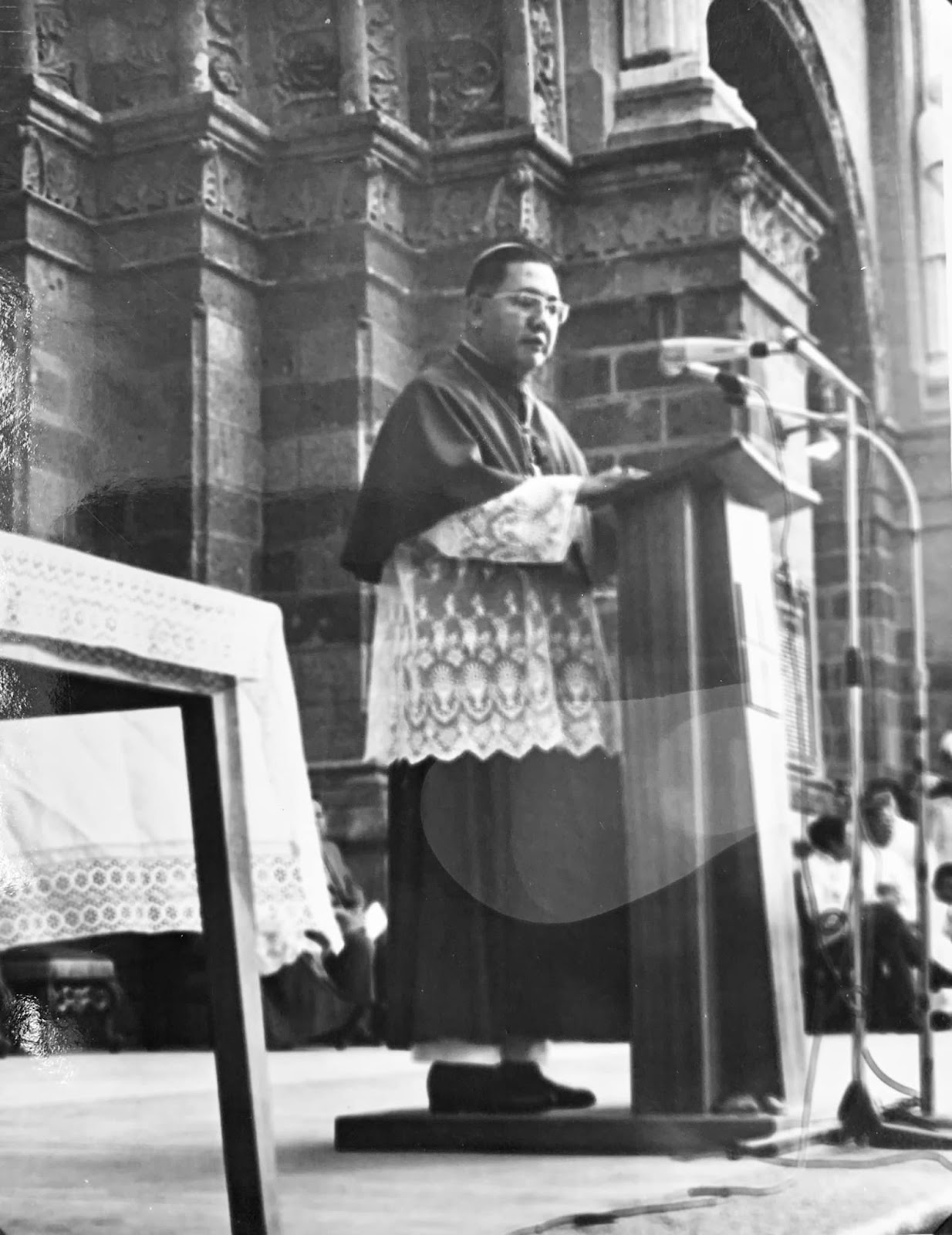ANO ANG ROLE NI JAIME CARDINAL SIN SA EDSA?
Jaime Cardinal Sin: A Legacy of Two EDSAs
Until Manila Archbishop Jaime Cardinal Sin came along, the history of the Roman Catholic Church in the Philippines was a broad, dismal, disappointing current of ultra-conservatism. The Church was historically identified as the conquering cross alongside the conquering sword of the Spanish conquistador. Jose Rizal’s novels Noli Me Tangere and El Filibusterismo were precisely the twin blades that slashed at Church abuses during more than three centuries of Spanish rule. Yet the Church persevered.
It took the Church almost five centuries before its ultra-conservative doors opened and out came fresh gusts of wind and a priest who held a liberal spear, and took to the barricades against entrenched government power. If Macaulay’s traveler from outer space dropped on the Philippines, he would have little difficulty spotting this priest. The year was 1972-73 when Jaime Sin, whose ancestors came from China, was appointed by the Vatican the new archbishop of Manila.
Archbishop Sin’s entry into public life was all the more auspicious because martial rule had just been proclaimed by President Ferdinand Marcos. The dictator was later to find out his most formidable opposition would come from the Church and the new Archbishop of Manila. That was the first time this author heard of Jaime Sin as head of the oldest Catholic archbishopric in the whole of Asia. We heard stories which were never published of course in a press controlled by the dictatorship that he was a fighting priest and refused to kowtow to President Ferdinand Marcos. That was unheard of. Everybody kowtowed to the dictator. Everybody kowtowed to the military which Mr. Marcos used to garrison the entire country. And so I was curious to meet this priest who had all the makings of a medireview Christian warrior.
The opportunity came early 1973. As Manila bureau chief of the Agence France-Presse, this author had just founded the Foreign Correspondents Association of the Philippines (FOCAP) and was its first president. By some happenstance, the archbishop called me up to say he wanted to meet the entire membership of the foreign press corps. It didn’t take long for us to hotfoot it to the Archbishop’s villa in Mandaluyong. Why in heaven’s name did he want to meet us?
The priest we met then was vastly different from that same priest today.
The archbishop was chubby, yes, roly-poly, but he walked briskly, his soutana flaring in the villa corridor. Th first thing you noticed was that wide cruiser smile, that engaging grin, and every now and then, that booming laughter. The archbishop loved to laugh, tell jokes, and when he liked one of them and we all chortled in glee, he would even slap his thighs in near juvenile delight. He was different, that was evident. A man of the cloth, evidently, but he could have excelled in slapstick vaudeville. His colorful jokes then we cannot narrate today.
But why did he invite us foreign correspondents? We found out soon enough. We were gathered in a large room with a lectern and a microphone. The archbishop had a message to read. A homily? A sermon on the verities, the virtues of Christianity? The imponderables? The voice, earlier playful and even naughty, now crackled gravely. And what came out was fire-engine prose. Archbishop Sin wasted no time hitting and banging and bashing Ferdinand Marcos from pillar to post, his cruel imposition of dictatorship, the reign of fear and tyranny in the countryside. Human rights abused and violated wholesale. Boy!
We were, to put it mildly, pleasantly shocked. This archbishop, about whom we knew little about, was taking on the dictator in language so fraught with fighting words that it sounded like a naval cannonade. The archbishop was the first prominent personage to lace on the gloves and come out fighting against the most powerful man in the land. We had enough explosive stuff for two or three headlines that would girdle the world, for our audience was an international audience. This was great!
Thus began a long, lasting friendship between this author and the archbishop, later to be promoted by the Vatican to cardinal. We in FOCAP would call upon him again to address us, to give us the latest on relations between the dictatorship and the Church. A lot of inside information. He was always the stuff of life, in fact bigger than life, until he got grievously ill three years ago. What a tragedy! The Laughing Lion of Voltaire was not there anymore. We were distraught. We figured he was a near goner, this priest fast with quip, faster with a riposte, and deadliest when he was discharging his artillery on the dictatorship.
But we have to backtrack to the dark days of martial rule.
Cardinal Sin and the prelates of the Catholic Bishops Conference of the Philippines (CBCP) which he headed became the de facto opposition. One of the Cardinal’s outlets was of course the FOCAP and through us the few local newspapers (the so-called mosquito press) that dared publish our dispatches. I sought an exclusive interview with President Marcos, asked him to react to Cardinal Sin’s and the bishops biting diatribes. This is what he said: “Oh they, I really do not think about them anymore. They have become irrelevant.”
A Marcos pretending indifference was a Marcos deeply hurt and scarred by Cardinal Sin and the CBCP. Subsequent events proved Marcos was on the wrong side of history. And the Cardinal was riding a high wave.
It was on February 22, 1986, that Jaime Cardinal Sin carved out his niche in posterity. A Palace mutiny, led by defense minister Juan Ponce Enrile and Col. Gregorio (Gringo) Honasan, failed. A lost and abandoned corps, they fled to Camp Aguinaldo, there to await death at the hands of a dictatorship. All members of the rebel RAM (Reform the Armed Forces Movement), they went down on their knees, said their last prayers. From the air, bombs would certainly drop. From land, artillery would certainly spit. There was no escape.
It was early in the evening on the same day that Jaime Cardinal Sin’s voice broke through Radio Veritas. The Cardinal called on the faithful to rally to EDSA, bring food and provisions, pray, protect the mutineers holed-out at Camp Aguinaldo. He called on the Carmelites and the Pink Sisters to fall on their knees, raise their hands and remain that way until the enemy fell. That call, remembered again and again, was officially honored February 25, the year 2000, the millennial celebration of EDSA. The mutineers at Camp Aguinaldo, who had been joined by AFP vice chief of staff Gen. Fidel Ramos, miraculously survived.
And so the EDSA People Power Commission conferred its first Freedom Award on Cardinal Sin with this citation:
“Cardinal Sin’s voice over Radio Veritas was calm. It was an overpowering calm. In an instant, the people marched to EDSA with their feet, some with flowers, some with food, some with the rosary and the breviary. So awesome was that power it stopped the dictator’s tanks, silenced his artillery and broke the armature of the dictatorship.”
Maria Montelibano as producer and myself as host put out an EDSA TV anniversary special on this 14th Centennial anniversary. Occupying centerpiece of course was Cardinal Sin. We interviewed him at the Archbishop’s villa. The years, like a desert sandstorm, had wrought their devastation. Emaciation had thinned his face to hollow ridges. The eyes were misty now, the left eye almost blind, the once strong voice now just three notches above a whisper. He did not walk. He hobbled. And yet it was a miracle he was still alive.
Two years earlier, he was hospitalized for renal failure.
Talk from the grapevine, not to mention some newspaper accounts, was that the Cardinal was gravely ill, and did not have much longer to live. He was on dialysis, which was bad enough. But despite the cluster of attending doctors, he contracted pneumonia. The nation was on a death watch. Many prayed. The Eternal Footman was at the Cardinal’s side. But this man, this priest, this prophet, this erstwhile Laughing Lion of Voltaire, fooled all of us. He survived. Of course, he remained on dialysis but he had gotten out of the cocoon of the Grim Reaper.
We would still meet with him, but the meetings got rarer and rarer. Once, I chanced to call up his younger brother Dr. Ramon Sin, dean of the medical faculty at the University of Santo Tomas. This was about a year before EDSA II. Dr. Sin said: “Teddy, don’t worry too much about the Cardinal. He does not have cancer. He is all right. When the time comes that you will need him again, he will be there.”
Prophetic words these.
The last week of September last year, the hidden hand of God moved. The good Lord, through the intercession of a crusading civic group called COPA (Council on Philippine Affairs), delivered a man at the doorstep of the Cardinal. The man’s name was Luis “Chavit” Singson, governor of Ilocos Sur. He was a sinner, a gambler, a drunk, an inveterate womanizer, a killer they also said. Chavit was as close as one got to the President Joseph Estrada, a member emeritus of Erap’s midnight cabinet.
For one reason or another, Singson was elbowed aside by Erap Estrada, kicked out of jueteng operations nationwide and also Bingo 2 Ball. The President dropped Singson in favor of Atong Ang, a disreputable crook and gambler. According to Singson, Atong Ang promised Erap Estrada more gambling proceeds by the week than the Ilocos Sur governor could ever give the President in a month. What is more, Singson managed to escape an assassination attempt reportedly masterminded by the President. Now he knew he would be rubbed out.
Cardinal Sin knew a miracle when he saw it.
He lost no time giving sanctuary to Luis “Chavit” Singson. He and his staff pored through Singson’s voluminous affidavits and documents. The verdict came fast in a pastoral issued by the Presbyterial Council of the Archbishopric of Manila. President Estrada had repeatedly committed crime, great crime, stole jueteng money by the hundreds of millions, with tobacco excise money to boot in the amount of P130 million. The pastoral October last year was a cry of Paul Revere, a cry of the Church, a cri de coeur, a cry of the Cardinal: Erap, resign!
Thus did this thunder peal and soon the whole world knew about it. It didn’t take long for massive demonstrations to break out. President Estrada sought a way out through impeachment proceedings in the Senate. There he had the number and eventually he would be acquitted. This was not to be. God, it seemed, had again taken over as the Cardinal had predicted. An 11-10 Senate vote against opening a second envelope closed down the impeachment trial. It was a great and grievous scandal. But it opened the way back to the streets and the EDSA Shrine. On that night alone of January 16, hundreds of thousands flocked to the Shrine. A million maybe?
One of them was Jaime Cardinal Sin. It was 11 p.m. He was beaming. He would say Mass. It was a starlit night as though the heavens had come together with a cocked ear to witness what was happening. Cardinal Sin felt no fatigue at all, no physical burden. “I was just hungry, that’s all,” he said. EDSA Dos had come to pass, People Power II. The voice of the Cardinal had taken on the timber of old.
Miracles do happen. Twice in 15 years.
thanks to: https://www.philstar.com/feature/113839/jaime-cardinal-sin-legacy-two-edsas
Old Photos of Cardinal Sin:
credits to the original owner:





